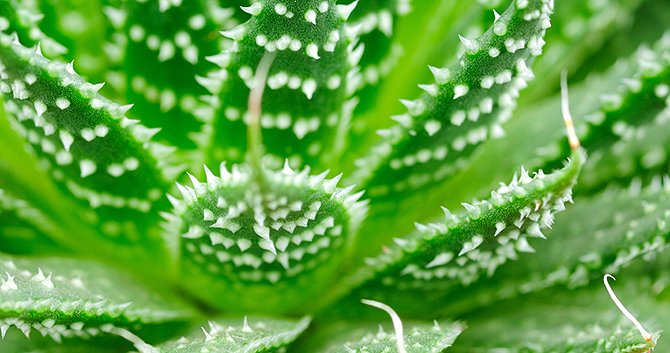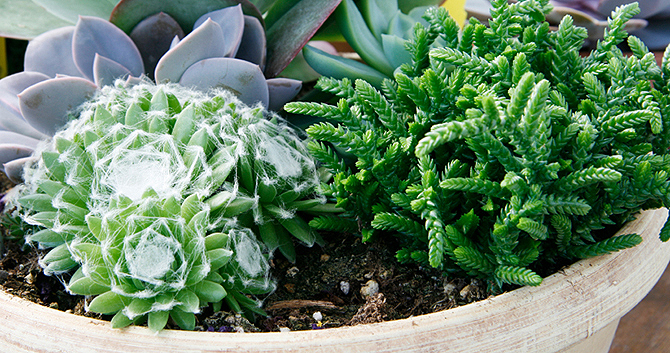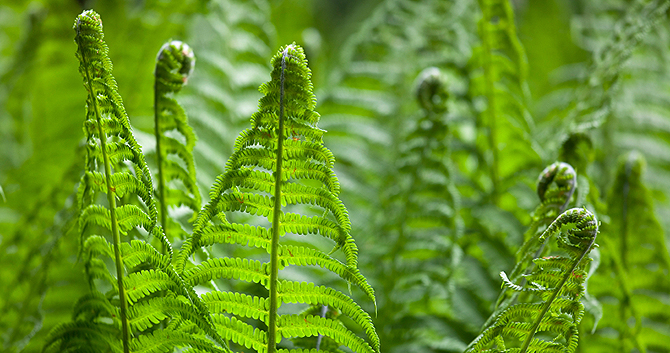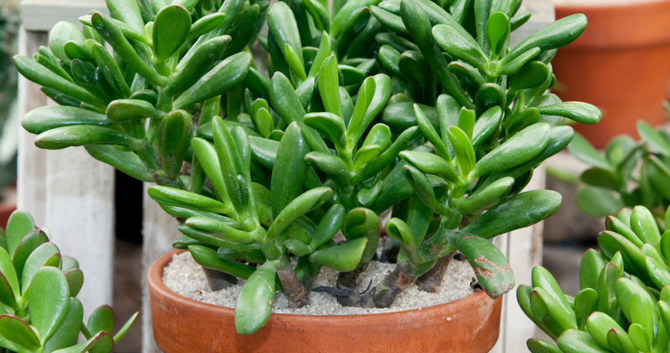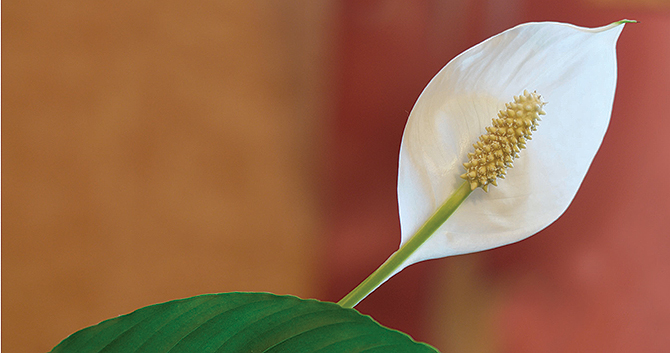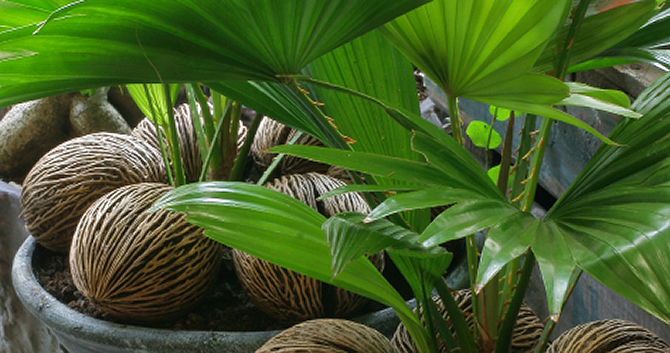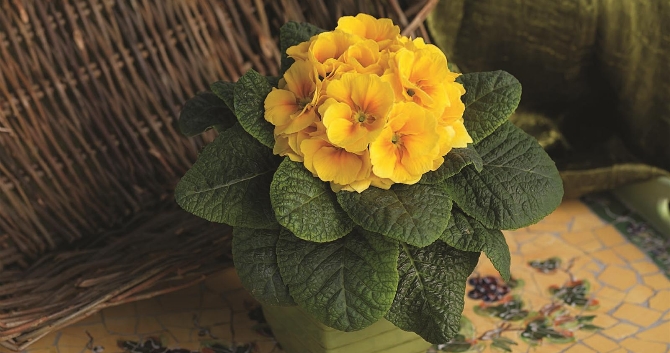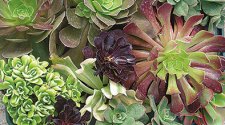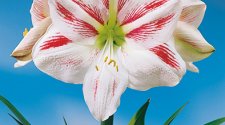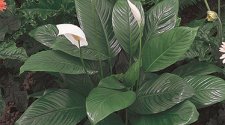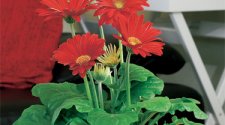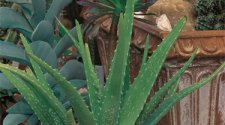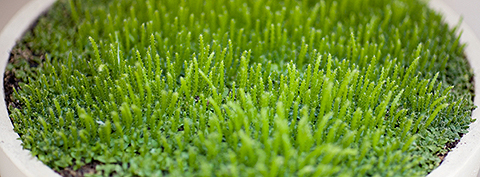 A small bowl of bright green moss creates a spa environment in a bathroom.
A small bowl of bright green moss creates a spa environment in a bathroom.
Flip through any home design magazine and you’ll quickly notice that designers often accessorize with plants to create rooms that look fresh, warm, and vibrant. Decorative and practical, house plants add a finishing touch to any decor and give your room a quick facelift on any budget. Plants have the power to foster relaxation and calm. They purify the air we breathe and offer a natural remedy for common complaints like dry air, allergies, and burns.
Health Benefits
NASA scientists were among the first to recognize plants’ ability to purify the air in space crafts to maintain a healthy environment for astronauts. And these same plants work in our homes and offices, too—effectively eliminating many airborne pollutants from cigarette smoke, paint, plywood, insulation, synthetic carpets, detergents, grocery bags, and dry cleaning fluid. NASA found that just two plants in an average size room will significantly improve air quality. Of course, the number you add depends on personal preference, but any number of green plants will enhance your environment.
Among the most effective air purifiers are philodendron, bamboo palm, rubber plant, peace lily, dracaena, lady palm, dwarf date palm, and spider plant (plus they’re easy to care for and insect resistant too). For allergy sufferers, Boston fern, English ivy, or snake plant all rate high for removing airborne mold, bacteria, and other unhealthy chemicals from the air. Add potted plants in several varieties and you’ll be sure to alleviate many common irritants in your home or office.
Indoor plants act as humidifiers. If you live in a dry climate or have dry, indoor, winter air, consider moisture-loving house plants with lots of leaves like Areca palm. They can be so effective that some people are able to replace humidifiers altogether, and reduce their electric use.
And every kitchen benefits from an aloe vera in reach. This long-standing favorite has sat upon counters for decades—a soothing remedy for both kitchen burns and sunburns, too.
Emotional Benefits
Beyond our physical health, plants also nurture our emotional well-being. During a long, cold winter, nothing lifts the spirits, adds cheer to a windowsill, or completes a table setting like an indoor plant. There is a wide variety of flowering and foliage plants to choose from to fit your space, your style, and your light conditions. You’ll find plants that thrive in any condition—from the bright light on a windowsill to the indirect light on a table or in a corner. Just check the plant tags to be sure your plant will thrive in the spot you’ve chosen.
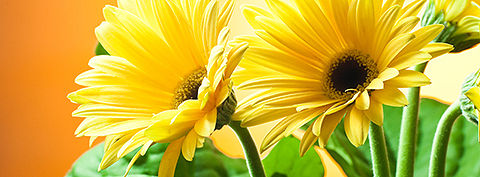 Gerbera daisies are not only colorful but are ranked high by NASA for purifying the air.
Gerbera daisies are not only colorful but are ranked high by NASA for purifying the air.
Want an easy-care bloomer? Check out African violets, begonias, and orchids. These celebrities of the indoor plant world offer exotically shaped flowers, vibrant colors, and long bloom times. They thrive on filtered sunlight and love the year-round warmth of centrally heated homes. Other popular flowering indoor plants such as mini roses, gerbera daisies, or azaleas are available year-round from your local supermarket or garden center. When they’ve finished blooming feel free to replace them with a new plant, just as you would with cut flowers.
You don’t need blooms to get the benefit of color. Green plants reduce stress and create a sense of tranquility in the home, classroom, or office. Consider Chinese evergreen or bamboo, which do well, even in rooms with low light. Another great choice is cactus or other succulents, which truly thrive on neglect—decorators are infatuated with their interesting shapes and textures, perfect for adding a pop of color to a room. Also consider bromeliads, topiaries, and ferns for their ability to create a soothing environment.
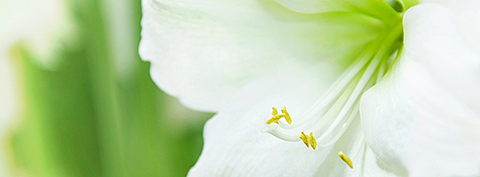 Amaryllis is among the celebrities of indoor bulbs.
Amaryllis is among the celebrities of indoor bulbs.
Of course, flowering indoor plants also make great holiday decorations. At Christmas, consider traditional favorites like amaryllis, poinsettias, Christmas cactus, and paper whites. These beauties can transform a room with spectacular blooms, fragrance, and drama. And nothing welcomes spring like a planter filled with tulips, hyacinth, and Easter lilies. When they’re finished blooming, simply plant the bulbs outdoors for color the next year.
Design Tips
Coordinating plants and containers is like matching a lamp and a shade. The right container can transform a plant into a contemporary work of art or a charming cottage accent. Think about the shape, color, size, and proportions of the container relative to the plant and your room, then choose the one with the right proportions and style for the look you want.
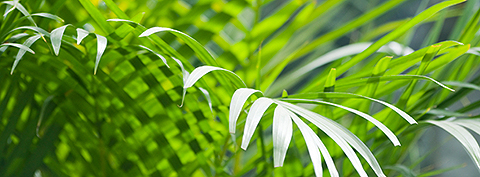 Palms are low-maintenance plants that purify indoor air and add drama to any room.
Palms are low-maintenance plants that purify indoor air and add drama to any room.
Use your imagination when it comes to arranging plants. Large floor plants create drama along an empty wall—and a feeling of separation between living spaces. Place pairs of plants flanking a fireplace, sofa, or bookshelf to create balance. Mix several varieties of plants to create a blend of color, size, and texture. Or group like plants in a single container for a strong visual impact.
For more information on plants and indoor air quality, visit:


